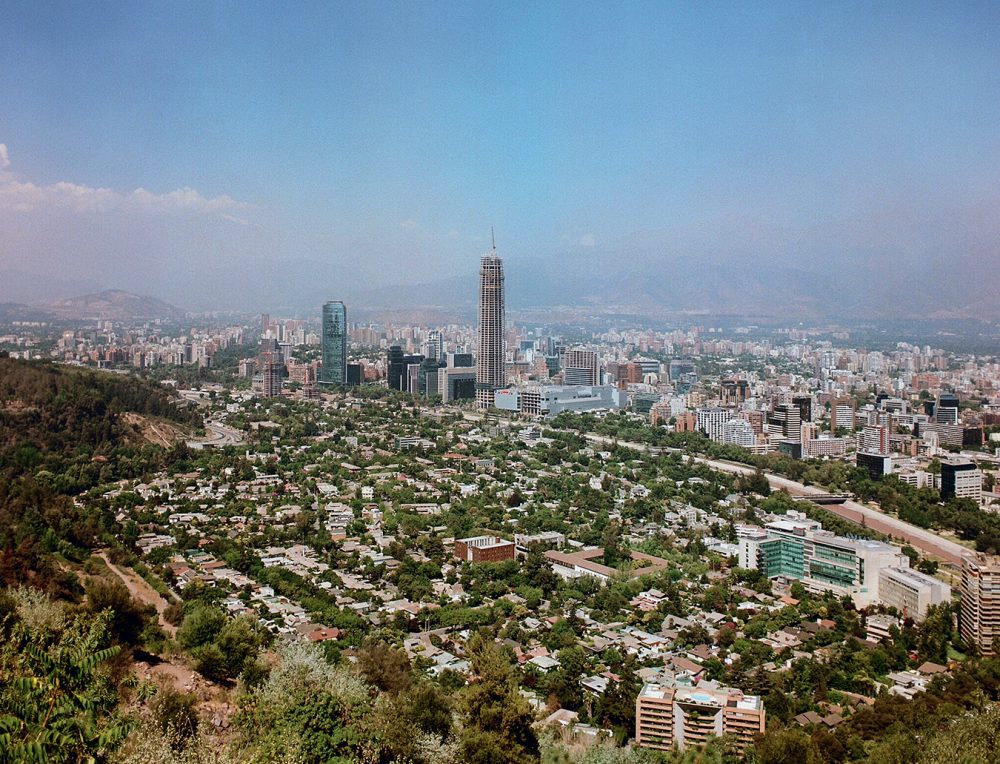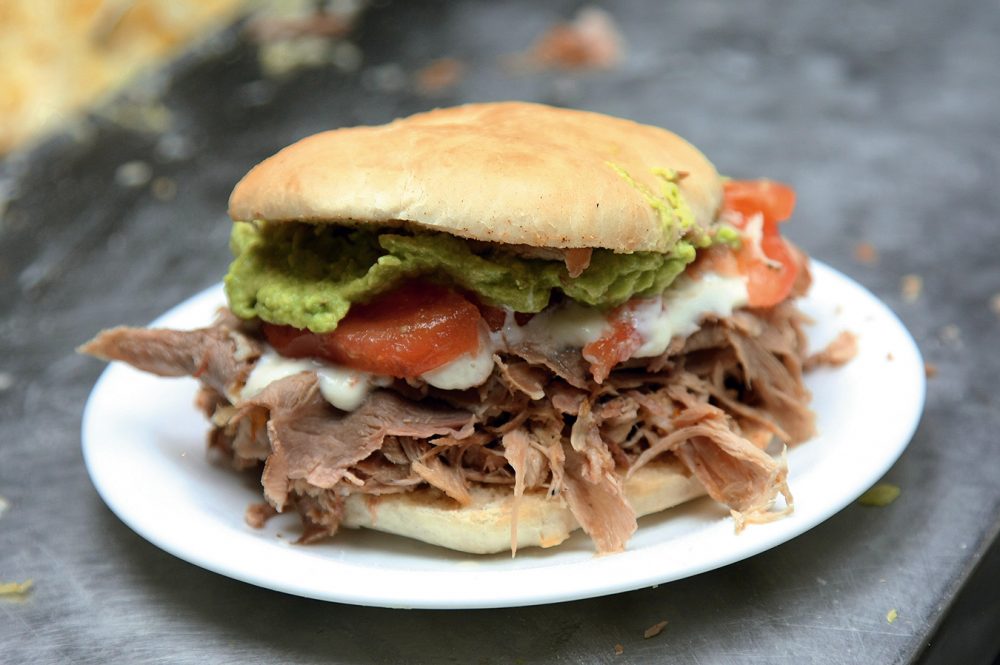Chileans have always had a rough ride, whether it’s an 8.8-magnitude quake, miners trapped for 69 days, or 17 years of military dictatorship under the rule of a guy who once stated, “I’m not a dictator. It’s just that I have a grumpy face.” A bit of an understatement, but Chileans have remained defiantly optimistic in the face of adversity. Chile has now become one of South America’s most prosperous and progressive countries. Its capital city, Santiago, is a bustling metropolis that some have dubbed “Sanhattan” due to its irrepressible energy and thriving urban scene. It has become a cultural and dining mecca and one only need mention Chilean wines to get an approving nod from grape lovers everywhere.
In Santiago, though, it’s safe to say wine isn’t the only drink that has legs. Throughout the city, and unique to Chile, are dozens of famous coffee bars known as cafés con piernas or “coffee with legs”. Imagine a Starbucks where coffee is served to men in suits by beautiful women in bikinis and three-inch heels, all at nine in the morning. No alcohol, no food served, just coffee and long-legged ladies working the espresso machines. When asked about why these coffee bars of the G-string variety have taken hold in the city, a leading Santiago TV producer, Maria Sarocca, was quoted saying, “After such a long dictatorship, people just felt like, ‘wow, we’re free. We can do whatever we want. We can finally do it.’ ”
The Nobel Prize–winning Chilean poet Pablo Neruda wrote a series of odes to common edibles like salt, tomatoes, wine, and artichokes, and one could only wonder what he’d compose about cafés con piernas. Or about popular completos, which are essentially hot dogs smothered in mayo, green avocado, and red tomatoes. Or about the behemoth of a sandwich called El Lomito, a hybrid of Chilean and German cuisine that for many almost borders on religious ecstasy (which is no mean feat in this predominately Roman Catholic country). Just off Santiago’s central Plaza Italia at Fuente Alemana, where the sandwich was created, you need a fork and knife to eat the whopping half-pound of thinly sliced, marinated, slow-braised pork that’s squeezed into a freshly baked bun. It’s said that you haven’t experienced and cannot understand Chile until you’ve eaten one of these monstrosities.
Another Chilean novelty is the Pisco Sour, comprising pisco, lemon juice, simple syrup and ice, although Peruvians claim to have invented the cocktail. After stating in Chile that he found the Peruvian version tastier, celebrity chef Anthony Bourdain incurred the wrath of many locals. Best not to challenge Chilean national pride.
Better still, and indicative of how Chileans find an upside to tragedy, is the Terremoto, a wine-based cocktail made with pineapple ice cream and Fernet. The name translates into English as “earthquake”, so called because it’s said to make the drinker’s legs shake. If you don’t feel the earth move after the first few, the next day’s hangover will surely register on the Richter scale.
Santiago has become a cultural and dining mecca and one only need mention Chilean wines to get an approving nod from grape lovers everywhere.
Loading up on all these local delicacies means you’ll need to walk off their effects, and you may as well soak up a little culture and couture in the process. The Museo Histórico Nacional, housed in a 1910 colonial building, provides a historical overview of the country up to the 1973 military coup. In addition, the Museo de Arte Contemporáneo is minutes away, with cutting-edge work by international contemporary artists on display in ever-changing exhibitions. The Museo de la Moda is a feast for fashionista eyes; it’s devoted to a 10,000-piece private collection that includes Madonna’s conical bra and the dress that inspired Princess Diana’s wedding gown.
All this highbrow stuff can eventually get tiring, and Santiago’s lively street life provides a nice counterpoint. Vendors at busy intersections seem to hustle everything for $2 (U.S.), from avocados to cell phone chargers—plus you can pick up a Nestle’s Super 8, a light, chocolate-dipped wafer that is Chile’s national candy bar. Meanwhile, at the Mercado Central, the variety of seafood on display is dazzling. This Victorian-style covered marketplace boasts stuffed shellfish empanadas, abalone (a.k.a. loco), and conger eel soup (Neruda’s favourite) at Donde Augusto restaurant.
There are plenty of malls, both indoor and out, selling everything from high-end designer goods to local arts and crafts. You can’t walk anywhere without bumping into some lapis lazuli since Chile is one of the few producers of this turquoise semi-precious stone. The Avenida Alonso de Córdova is Santiago’s answer to luxury shopping with stores that boast the cream of the crop in goods and wonderful contemporary art galleries.
Dinner at the chic Europeo restaurant will further exceed expectations, with Swiss-trained chef Carlos Meyer Anwandter’s mostly seafood tasting menu. It included, in one experience, centolla, or southern king crab, and tobacco-flavoured ice cream. The wine list at Europeo is extensive, but at Wine 365 at the Ritz-Carlton Santiago, bistro foods are paired with red and white Chilean wines for each day of the year—hence the name.
The fact is, this long, narrow country, with its range of geography and climate, has a grape growing region that would equivalently span from Alaska to Mexico, and can thus produce an amazing range of varieties. The main wine regions are located around Santiago like the spokes on a wheel. While individual wineries are easy to explore in a day trip, once you head out, you might easily spend weeks touring the various regions. A few wineries to note are Viña MontGras, built on a hillside with stunning views; Viña Santa Rita, with its magnificent museum of pre-Columbian art; Viña Caliterra, where wild horses roam free and keep grasslands trim, which reduces wild fires; and Clos Apalta Winery, where its $10-million (U.S.) facility and semicircle of 21 French wooden vats set among a stainless steel tapestry is one of the wonders of the wine world.
Chileans like to say that they are at el fin del mundo, or the end of the earth, but more and more it feels like the centre these days.










